Benjamin Thorpe was an English scholar of Anglo-Saxon literature.
Solomon and Saturn is the generic name given to four Old English works, which present a dialogue of riddles between Solomon, the king of Israel, and Saturn, identified in two of the poems as a prince of the Chaldeans.
Ælfric of Eynsham was an English abbot and a student of Æthelwold of Winchester, and a consummate, prolific writer in Old English of hagiography, homilies, biblical commentaries, and other genres. He is also known variously as Ælfric the Grammarian, Ælfric of Cerne, and Ælfric the Homilist. In the view of Peter Hunter Blair, he was "a man comparable both in the quantity of his writings and in the quality of his mind even with Bede himself." According to Claudio Leonardi, he "represented the highest pinnacle of Benedictine reform and Anglo-Saxon literature".
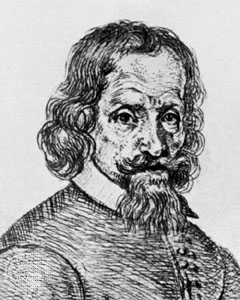
Johann Rudolf Glauber was a German-Dutch alchemist and chemist. Some historians of science have described him as one of the first chemical engineers. His discovery of sodium sulfate in 1625 led to the compound being named after him: "Glauber's salt".

The Book of Abramelin tells the story of an Egyptian mage named Abraham, or Abra-Melin, who taught a system of magic to Abraham of Worms, a Jew in Worms, Germany, presumed to have lived from c. 1362–c. 1458. The system of magic from this book regained popularity in the 19th and 20th centuries partly due to Samuel Liddell MacGregor Mathers' translation, The Book of the Sacred Magic of Abramelin the Mage.

The Nuremberg Chronicle is an illustrated encyclopedia consisting of world historical accounts, as well as accounts told through biblical paraphrase. Subjects include human history in relation to the Bible, illustrated mythological creatures, and the histories of important Christian and secular cities from antiquity. Finished in 1493, it was originally written in Latin by Hartmann Schedel, and a German version was translated by Georg Alt. It is one of the best-documented early printed books – an incunabulum – and one of the first to successfully integrate illustrations and text.
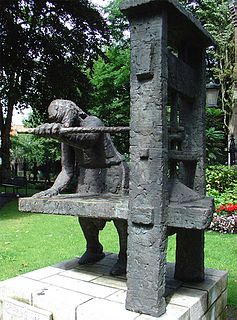
Gerard or Gheraert Leeu, Leew, Lyon, or Leonis, was a Dutch printer of incunabula.
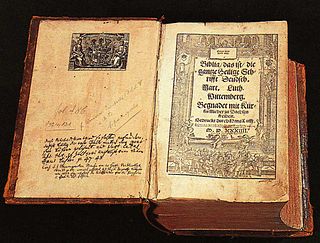
The Luther Bible is a German language Bible translation from Latin sources by Martin Luther. The New Testament was first published in September 1522, and the complete Bible, containing the Old and New Testaments with Apocrypha, in 1534. Luther continued to make improvements to the text until 1545. It was the first full translation of the Bible into German which made use of Greek texts, not just their Latin Vulgate translations. However, the updated 2017 translation of the Luther Bible published by the Evangelical Church in Germany notes that "Luther translated according to the Latin text". Luther did not speak Greek, Hebrew, or Aramaic and relied heavily on other scholars for assistance, particularly Melanchthon. One of the textual bases of the New Testament translation was the Greek version recently published by the Dutch Catholic humanist Erasmus of Rotterdam and called the Novum Instrumentum omne.

Zuffolo (also chiufolo, ciufolo) is an Italian fipple flute. First described in the 14th century, it has a rear thumb-hole, two front finger-holes, and a conical bore. It is approximately 8 cm in length and has a range of over two octaves, from B3 to C6 (Marcuse 1975c). A larger instrument of the same name, with a lowest note of C5 appeared in the early 17th century (Fuller-Maitland, Baines, and Térey-Smith 2001).

Virgil Solis or Virgilius Solis, a member of a prolific family of artists, was a German draughtsman and printmaker in engraving, etching and woodcut who worked in his native city of Nuremberg.
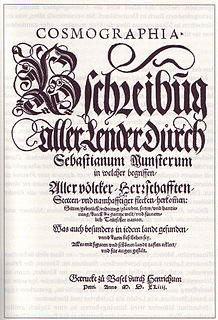
The Cosmographia ("Cosmography") from 1544 by Sebastian Münster (1488–1552) is the earliest German-language description of the world.
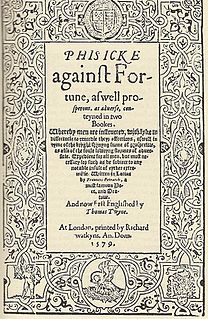
De remediis utriusque fortunae is a collection of 254 Latin dialogues written by the humanist Francesco Petrarca (1304–1374), commonly known as Petrarch.
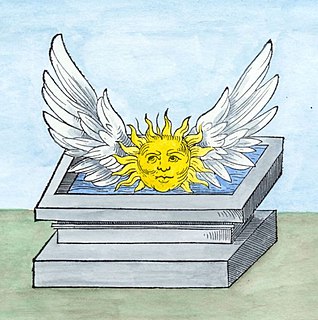
The Rosary of the Philosophers is a 16th-century alchemical treatise. It was published in 1550 as part II of De Alchimia Opuscula complura veterum philosophorum (Frankfurt). The term rosary in the title is unrelated to the Catholic prayer beads; it refers to a "rose garden", metaphoric of an anthology or collection of wise sayings.
Thomas Kantzow was a chronicler in the Duchy of Pomerania. He studied at the universities of Rostock and Wittenberg, and was a secretary of the Pomeranian dukes. His manuscripts, rediscovered in 1729, 1832 and 1973, are written in Low German and Standard German language, and were printed in the 19th and 20th centuries. They contain a Low German and three Standard German chronicles covering the history of Pomerania until 1536.
The Aelfric Society was a text publication society founded in London, England, and active from 1842 to 1856, which published the Homilies of Ælfric of Eynsham and other works by Anglo-Saxon writers. It is also known as Aelfric Society Publications.

The Erfurt Enchiridion is the second Lutheran hymnal. It appeared in 1524 in Erfurt in two competing editions. One of them contains 26 songs, the other 25, 18 of them by Martin Luther, others by Elisabeth Cruciger, Erhard Hegenwald, Justus Jonas and Paul Speratus. While the songs of the Enchiridion could be used in churches, they were intended primarily for singing elsewhere, such as at home, at court, and in guild meetings.
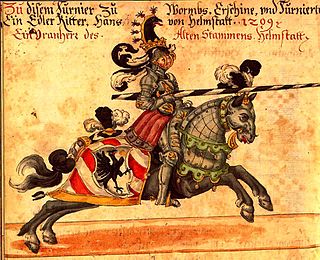
The Thurnierbuch, published in 1530, is an important work on the tradition of medieval tournaments in the Holy Roman Empire.

Theuerdank is a poetic work composed by the Holy Roman Emperor, Maximilian I, (1486-1519) in German which tells the fictionalised and romanticised story of his journey to marry Mary of Burgundy in 1477. The published poem was accompanied by 118 woodcuts designed by the artists Leonhard Beck, Hans Burgkmair, Hans Schäufelein and others. Its newly designed blackletter typeface was influential.
Adrian and Ritheus is an Old English prose literary text preserved in British Library manuscript Cotton Julius A ii, fols 137v-140. It consists of a dialogue of forty-eight formulaic questions and answers between the titular 'Adrianus' and 'Ritheus'. Adrianus interrogates Ritheus using the formulaic expression Saga me ; Ritheus responds using the formulaic Ic þe secge. The nature of the questions posed varies between the factual and the enigmatic, but the style of questioning is "usually short and to the point".

Admonitio ad filium spiritualem is an anonymous Latin "manual of spiritual edification" written around the year 500. During the Middle Ages, it was believed to be a translation by Rufinus of Aquileia of a Greek original by Basil of Caesarea. It is now thought to be an original Latin composition, most likely by Porcarius of Lérins. Its author is still known conventionally as Pseudo-Basil.














